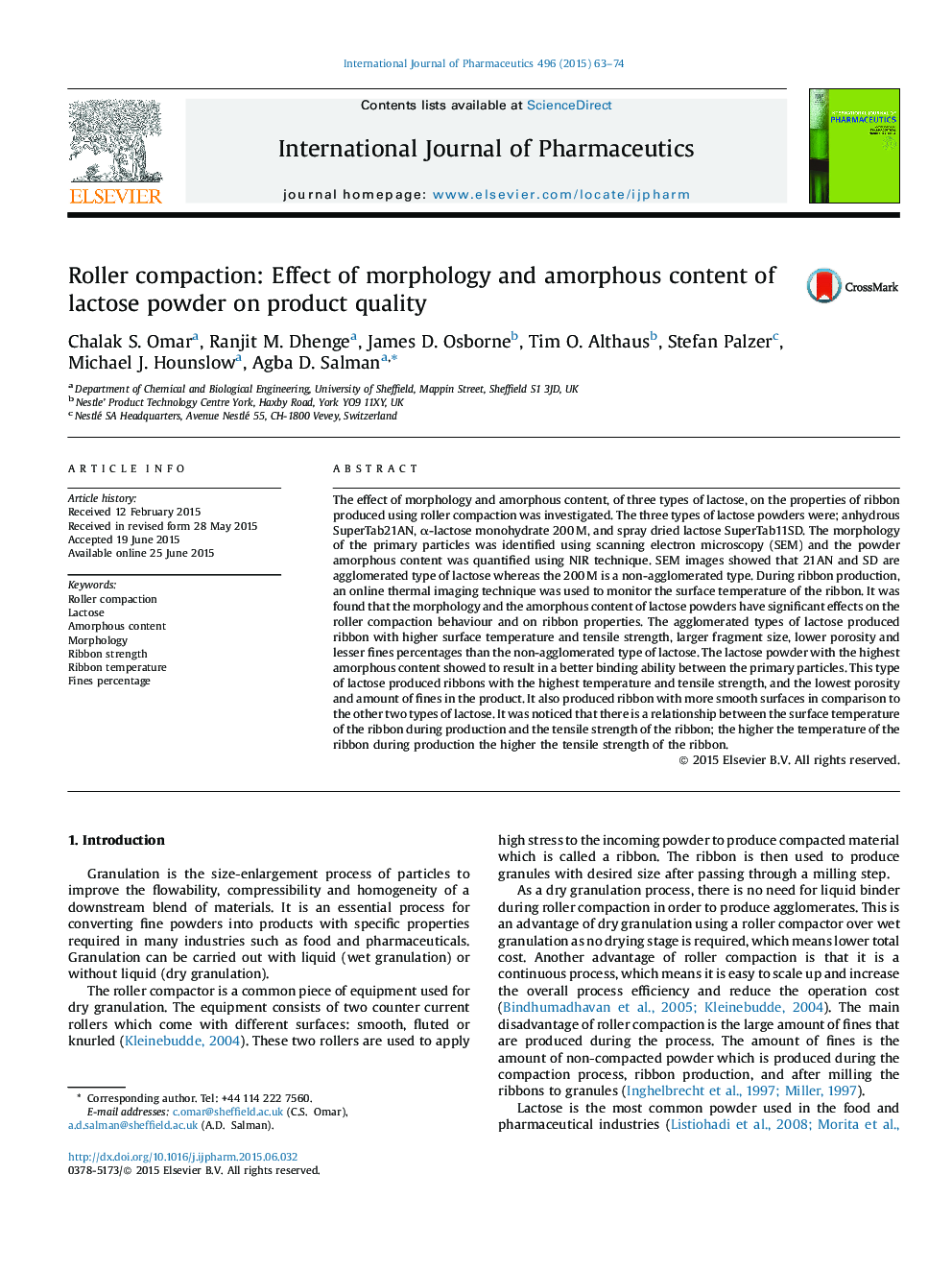| کد مقاله | کد نشریه | سال انتشار | مقاله انگلیسی | نسخه تمام متن |
|---|---|---|---|---|
| 2501169 | 1557326 | 2015 | 12 صفحه PDF | دانلود رایگان |
The effect of morphology and amorphous content, of three types of lactose, on the properties of ribbon produced using roller compaction was investigated. The three types of lactose powders were; anhydrous SuperTab21AN, α-lactose monohydrate 200 M, and spray dried lactose SuperTab11SD. The morphology of the primary particles was identified using scanning electron microscopy (SEM) and the powder amorphous content was quantified using NIR technique. SEM images showed that 21AN and SD are agglomerated type of lactose whereas the 200 M is a non-agglomerated type. During ribbon production, an online thermal imaging technique was used to monitor the surface temperature of the ribbon. It was found that the morphology and the amorphous content of lactose powders have significant effects on the roller compaction behaviour and on ribbon properties. The agglomerated types of lactose produced ribbon with higher surface temperature and tensile strength, larger fragment size, lower porosity and lesser fines percentages than the non-agglomerated type of lactose. The lactose powder with the highest amorphous content showed to result in a better binding ability between the primary particles. This type of lactose produced ribbons with the highest temperature and tensile strength, and the lowest porosity and amount of fines in the product. It also produced ribbon with more smooth surfaces in comparison to the other two types of lactose. It was noticed that there is a relationship between the surface temperature of the ribbon during production and the tensile strength of the ribbon; the higher the temperature of the ribbon during production the higher the tensile strength of the ribbon.
SEM images of the surface of ribbons produced at 100 bar from different types of lactose.Figure optionsDownload high-quality image (228 K)Download as PowerPoint slide
Journal: International Journal of Pharmaceutics - Volume 496, Issue 1, 30 December 2015, Pages 63–74
